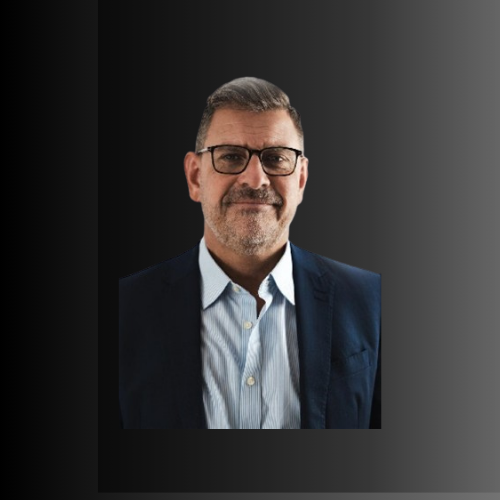A dynamic and visionary leader, Alex Jennings has spent nearly four decades shaping the global procurement, supply chain, and sales landscape. With a career spanning senior corporate roles and a passion for driving innovation, Alex has a unique perspective on procurement’s evolving challenges and opportunities. His expertise extends beyond traditional procurement, having also served as a VP of Sales and Marketing, giving him a rare dual insight into both sides of the negotiation table.
Now, as the founder of The Alchemie Network, Alex is on a mission to redefine procurement as a collaborative, purpose-driven, and future-ready function—one that not only optimizes cost and efficiency but also champions sustainability, innovation, and strategic growth.
Always eager to share insights, we seized the opportunity to ask Alex four key questions.
Alex, what do you love about Procurement?
I love how procurement combines strategy, collaboration, and problem-solving to create real value for an organisation. It’s a dynamic field where you can influence cost savings, sustainability, and innovation while building meaningful relationships with suppliers and internal stakeholders. You get to influence the strategic direction of a business and over the next decade with the challenges that ESG bring to our table you can become a Procurement Superhero.
Procurement vs Sales: Why don’t they always work hand-in-hand? What’s the solution?
The friction often arises from misaligned objectives—sales focus on revenue generation, while procurement prioritizes cost and compliance. The solution is fostering mutual understanding and collaboration through joint KPIs, shared goals, and open communication.
I have spent six years of my career as a VP of sales and marketing for a global beverage can manufacturer being responsible for sales to all the global FMCG drink producers.
It was my sales experience that prepared me for my first CPO role. I love both roles but became and is where my heart is.
When you produce a product that is heavily focused on the price of commodities you need to have an aligned strategy that connects your risk management, your price management strategy with your marketing and sales campaign. We need to work together for it to become truly effective.
If you could build a perfect procurement function, what would it look like?
The perfect procurement function would be:
- Agile: Quickly adapting to changes in the market and responding proactively to disruptions.
- Data-Driven: Leveraging advanced analytics and AI for smarter, faster, and more informed decision-making.
- Collaborative: Working seamlessly with internal and external stakeholders to drive alignment and build strong relationships.
- Purpose-Driven: Centered on sustainability, innovation, and creating long-term value for the organization and society.
- Creative: Embracing out-of-the-box thinking to solve complex challenges, unlock opportunities, and drive continuous improvement.
- Innovative: Actively exploring and adopting new technologies, processes, and ideas to stay ahead of industry trends and transform procurement’s impact.
- Sustainability-Focused: Championing the sustainability agenda by embedding ESG principles into supplier selection, sourcing strategies, and overall operations.
By balancing agility, data, collaboration, and purpose with creativity, innovation, and sustainability, procurement can evolve into a future-ready, transformative function.
What is the biggest challenge procurement faces in the coming years? How can this risk be mitigated?
Beyond geopolitical and environmental risks, one of the biggest challenges procurement will face is ensuring supply chain resilience in an era of increasing disruption. This challenge is compounded by the growing complexity of ESG (Environmental, Social, and Governance) compliance, human rights considerations, and the impact of global tariffs and counter-tariffs on trade dynamics. Additionally, the rapid pace of technological advancements requires procurement teams to continuously adapt and innovate.
To mitigate these risks, procurement can take the following steps:
- Diversification: Broaden supplier bases and avoid over-reliance on single-source suppliers or specific regions, reducing exposure to disruptions.
- Building Stronger Supplier Relationships: Develop long-term, collaborative partnerships with suppliers to improve transparency, trust, and mutual support in times of crisis.
- Leverage Predictive Analytics: Use data-driven insights to anticipate potential risks, identify bottlenecks, and proactively plan for alternative sourcing strategies.
- Embed ESG and Human Rights Standards: Ensure that procurement policies align with strict ESG requirements and actively monitor supply chains for compliance with human rights standards to mitigate reputational and regulatory risks.
- Adapt to Trade Policies: Stay informed on tariffs, counter-tariffs, and evolving trade regulations, leveraging global expertise to adjust sourcing strategies and maintain competitiveness.
- Embrace Technology: Invest in digital tools and automation to streamline procurement processes, improve decision-making, and enable greater agility in responding to supply chain challenges.
By addressing these interconnected challenges with a multi-faceted approach, procurement can move from being a reactive function to a proactive, strategic enabler of business success in the face of uncertainty.

